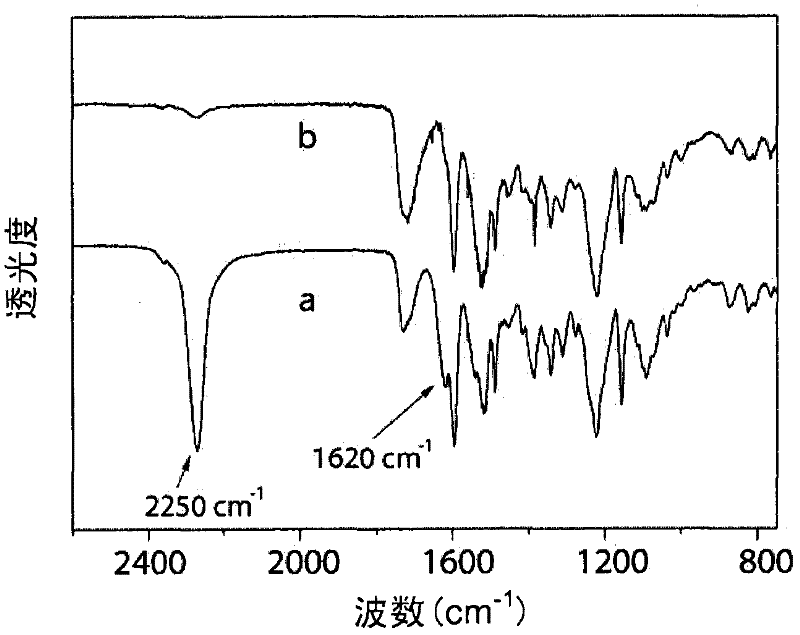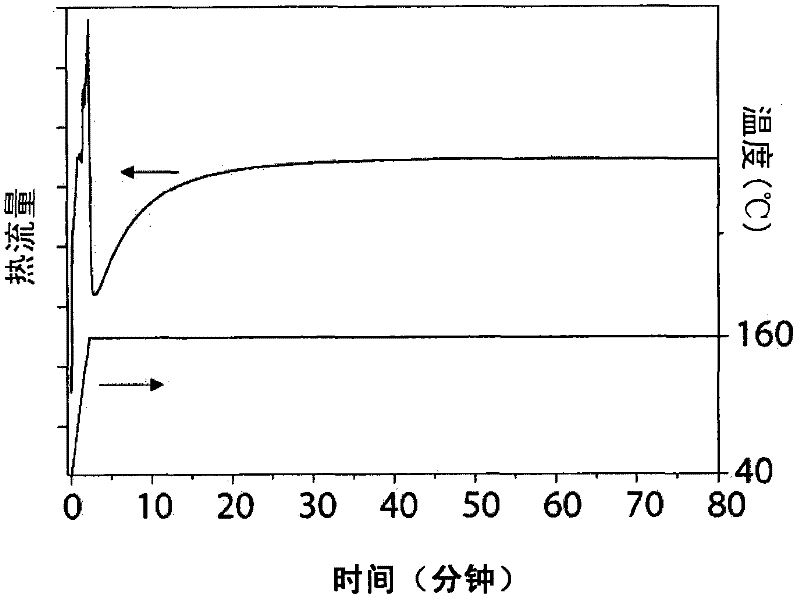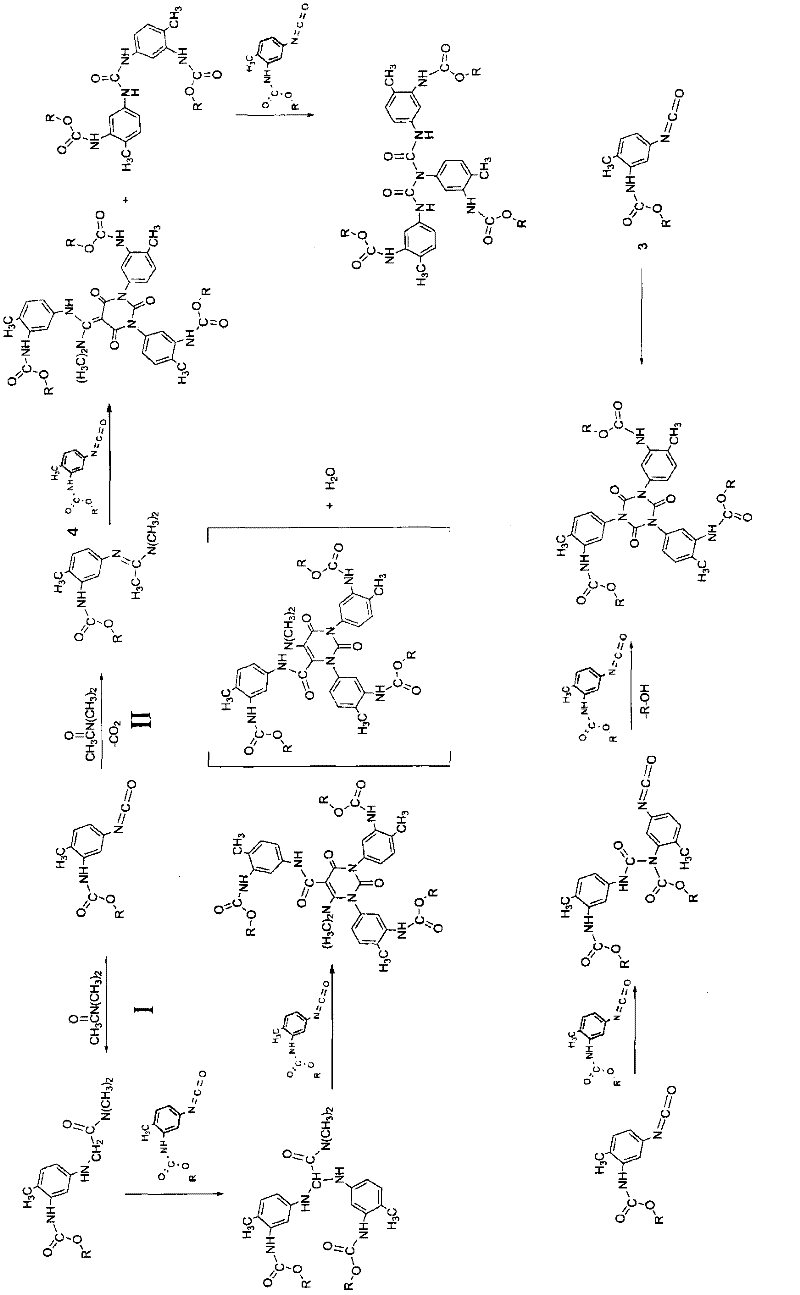Process for realization of polymeric materials with second order nonlinear electro-optical properties and electro-optical devices made with said material
A polymer material and second-order nonlinear technology, applied in nonlinear optics, instruments, optics, etc., can solve problems such as thermal degradation of chromophores
- Summary
- Abstract
- Description
- Claims
- Application Information
AI Technical Summary
Problems solved by technology
Method used
Image
Examples
preparation example Construction
[0071] Preparation of optical waveguide
[0072] Polymer film technology with electro-optical properties has been developed, which can replace traditional inorganic electro-optical substrates such as LiNbO used in the preparation of devices (phase / amplitude / frequency modulators, converters, converter matrices, etc.) 3 , InP or GaAs for digital or analog optical transmission / precision equipment.
[0073] Replacing inorganic substrates with organic materials can bring many advantages in terms of cost and performance. In terms of economy, a development similar to that experienced in the field of microelectronics can be foreseen. In the field of microelectronics, from the use of inorganic substrate-based technology to plastic substrate-based technology (so-called printed circuit boards), investment and production The cost is greatly reduced, and ultimately the global cost is significantly reduced, while the performance remains unchanged.
[0074] The use of these materials is highly de...
Embodiment 1
[0091] Use 15.0g (97.3mmol) of 2-amino-5-nitrophenol to prepare 2-amino-5-nitrophenol diazonium salt [denoted as (a)] and suspend it in 160mL water and 53mL 37wt% HCl . The suspension was cooled to 0-5°C, and then 6.74g (97.3mmol) NaNO was added under stirring 2 Solution in 50mL water. After 2 hours, the diazonium salt was separated by vacuum filtration.
[0092] The diazonium salt (a) was slowly added to 14.9 g (97.3 mmol) of 2,5-dimethoxyaniline in 200 mL of a solution containing the following substances: 20 mL 37 wt% HCl, 40 mL ethanol, and 140 mL water. After stirring for 1 hour, the resulting mixture was poured into 500 mL of saturated aqueous sodium acetate. The green product (b) was separated by filtration and recrystallized with 1:3 heptane:acetone.
[0093] The following results are obtained. The yield was 77%. Melting point: 218°C. 1 H-NMR(CHCl 3 -d) δ (ppm): 3.92 (s, 3H); 3.95 (s, 3H); 4.68 (s, 2H); 6.32 (s, 1H); 7.78 (s, 1H); 7.85 (m, 3H); 13.86(s, 1H). [Data is ...
Embodiment 2
[0102] The diazonium salt obtained in Example 1 was slowly added to a solution containing 14.7 g (97.3 mmol) 2-(methylphenylamino) ethanol in 200 mL of a solution containing 20 mL of 37 wt% HCl, 40 mL of ethanol, and 140 mL of water. After stirring for 1 hour, the resulting mixture was poured into 500 mL of saturated aqueous sodium acetate. The resulting product (h) was separated by filtration, and recrystallized from DMF and water.
[0103] Product (h) 1 H-NMR data:
[0104] 1 H-NMR(DMSO-d 6 , 200MHz) δ (ppm): 3.04 (s, 3H); 3.55 (m, 4H); 4.78 (s, 1H); 6.84 (d, 2H, J = 9.2 Hz); 7.72 (m, 3H); 7.86 ( d, 2H, J=9.2 Hz); 11.30 (s, 1H).
[0105] Then, 5.00g (15.8mmol) of product (h) was dissolved in 100mL containing 3.00g K 2 CO 3 The DMF. Then, 6.58 g (52.6 mmol) of 2-bromoethanol was slowly added, and the mixture was stirred at room temperature. After 72 hours, the solution was filtered and poured into 300 mL of saturated aqueous sodium acetate. The resulting product (e) is filtere...
PUM
| Property | Measurement | Unit |
|---|---|---|
| surface roughness | aaaaa | aaaaa |
Abstract
Description
Claims
Application Information
 Login to View More
Login to View More - R&D
- Intellectual Property
- Life Sciences
- Materials
- Tech Scout
- Unparalleled Data Quality
- Higher Quality Content
- 60% Fewer Hallucinations
Browse by: Latest US Patents, China's latest patents, Technical Efficacy Thesaurus, Application Domain, Technology Topic, Popular Technical Reports.
© 2025 PatSnap. All rights reserved.Legal|Privacy policy|Modern Slavery Act Transparency Statement|Sitemap|About US| Contact US: help@patsnap.com



